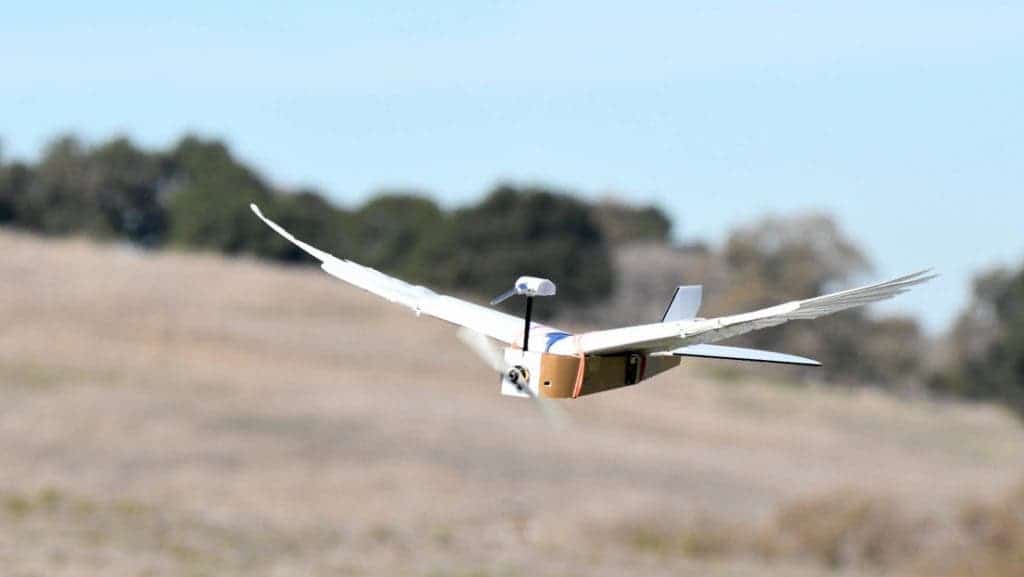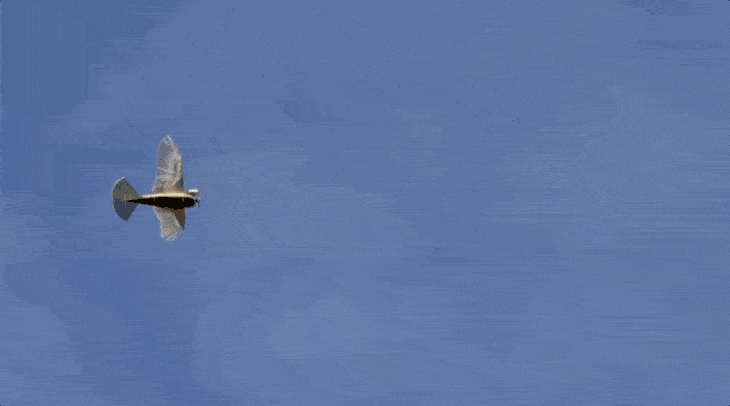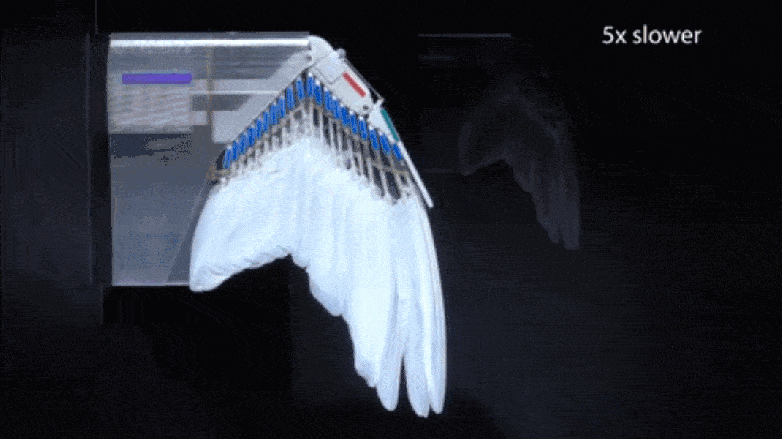Strong and muscular fliers, pigeons are naturally suited to handle the blowy winds between buildings in large cities. That’s why engineers have now turned to them for inspiration, adding pigeon flight feathers to an airborne robot called PigeonBot.

The robotic pigeon integrates true elements of traditional flying machines with elements of biology. David Lentink and colleagues at Stanford University didn’t try to build a machine to act like a bird, which would have been highly challenging. Instead, they closely studied biological mechanisms to learn how birds fly.
“I really wanted to understand how birds change the shape of their wings,” said David Lentink to Popular Science, an assistant professor of mechanical engineering at Stanford and a co-author on a new study which was published in the journal Science Robotics.

Lentink and the team studied common pigeons, looking at their skeletons and feathers. They discovered that the birds control the flight through about 40 feathers, using four “wrist” and “finger” joints to steer their movements. With that knowledge, they recreated the same mechanisms but in a drone driven by propellers.

The drone’s body is formed by a foam board frame, with an embedded GPS and a remote-control receiver. The maneuverable wings have actual feathers from pigeons attached. Previous prototypes had carbon and glass fiber but were much heavier, something now solved with the new wing design.
The PigeonBot’s flying capabilities are enabled by a propeller, a fuselage, and a tail. It has motors, a pair per each wing, that can adjust each of the artificial wings and the feathers at two different joints. The researchers can use a remote to move the wing and lead to the robot to turn and bank, mimicking a real pigeon.
“We determined that birds can steer using their fingers,” Letnink said. Both birds’ wings and human arms share basic structural similarities, he and his team argued. For example, wings have humerus, radius and ulna bones and at each wingtip, birds have finger-like anatomy that can move 30 degrees.
Developing the PigeonBot had its challenges and lessons learned for the researchers. One discovery was that the robot works best when all the feathers come from the same bird. Also, incorporating them into the machine required maintenance, specifically smoothing the feathers by hand.
There are parallels between the PigeonBot and actual planes. That’s why Letnik believes that airplanes of the future will make use of morphing wings by incorporating lessons from pigeons and other birds. “You won’t see a feathers airplane but you’ll find mart materials in them,” he argued.


